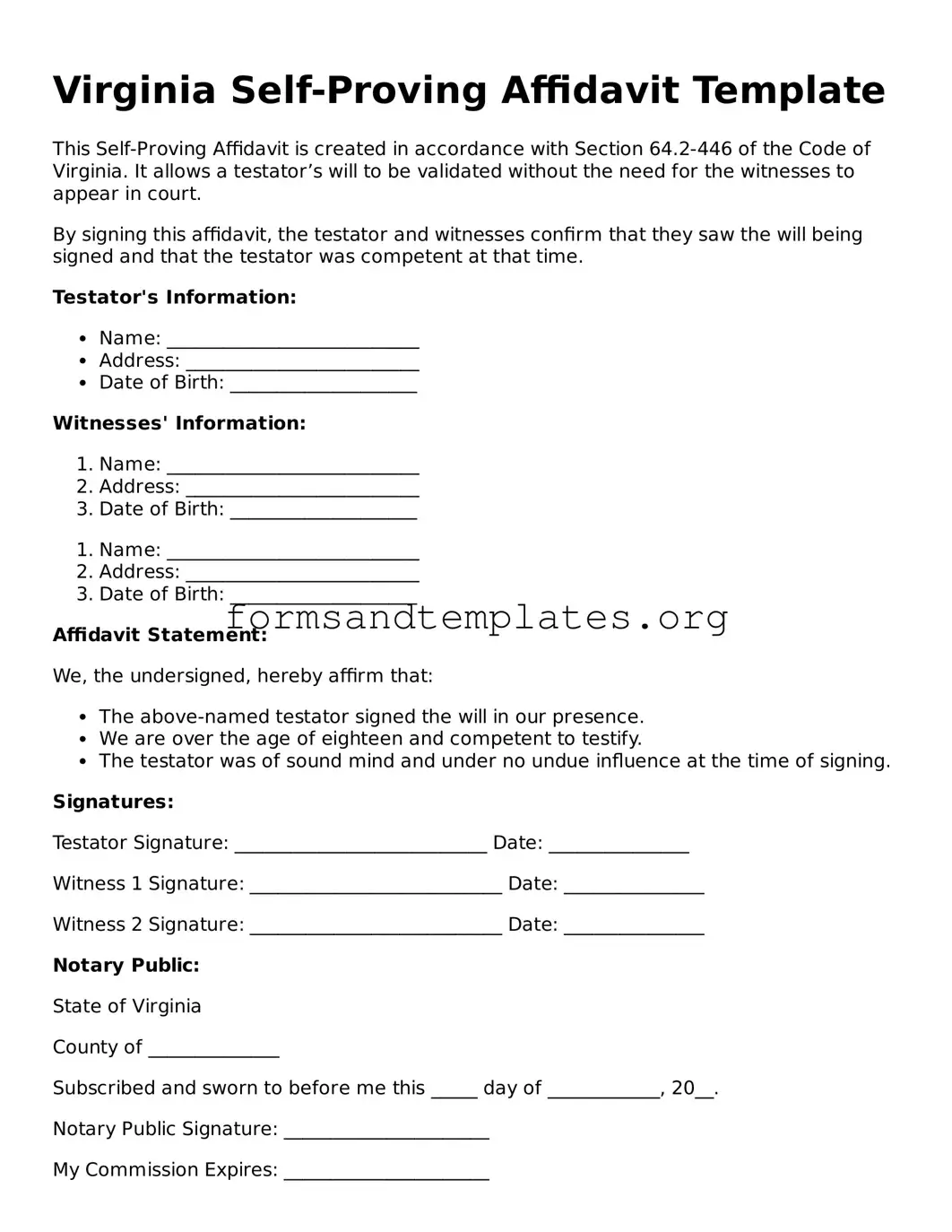Virginia Self-Proving Affidavit Template
This Self-Proving Affidavit is created in accordance with Section 64.2-446 of the Code of Virginia. It allows a testator’s will to be validated without the need for the witnesses to appear in court.
By signing this affidavit, the testator and witnesses confirm that they saw the will being signed and that the testator was competent at that time.
Testator's Information:
- Name: ___________________________
- Address: _________________________
- Date of Birth: ____________________
Witnesses' Information:
- Name: ___________________________
- Address: _________________________
- Date of Birth: ____________________
- Name: ___________________________
- Address: _________________________
- Date of Birth: ____________________
Affidavit Statement:
We, the undersigned, hereby affirm that:
- The above-named testator signed the will in our presence.
- We are over the age of eighteen and competent to testify.
- The testator was of sound mind and under no undue influence at the time of signing.
Signatures:
Testator Signature: ___________________________ Date: _______________
Witness 1 Signature: ___________________________ Date: _______________
Witness 2 Signature: ___________________________ Date: _______________
Notary Public:
State of Virginia
County of ______________
Subscribed and sworn to before me this _____ day of ____________, 20__.
Notary Public Signature: ______________________
My Commission Expires: ______________________
